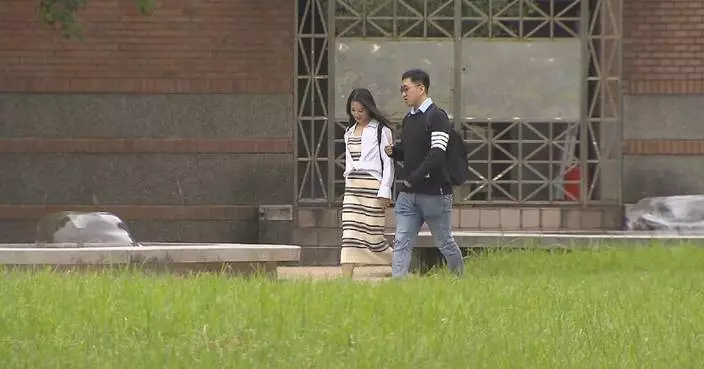China's passenger trips by rail, air and expressways peaked again on Sunday, the last day of the five-day May Day holiday.
The railway system is projected to handle 18.65 million passenger trips on Sunday, nearly one million more from the previous day. The country's railway operator added 1,710 trains nationwide to cope with the travel rush.
Railway systems in Beijing, the Yangtze River Delta region, and Guangzhou are expected to handle 1.52 million, 3.6 million, and 2.56 million passenger trips, respectively.
China's civil aviation authorities planned to operate 17,300 flights on Sunday and deliver 2.18 million passenger trips.
Major airports in the country, including the Shanghai Pudong International Airport, Guangzhou Baiyun International Airport, Beijing Capital International Airport, and Shenzhou Bao'an International Airport, all witnessed large influxes of passengers.
The heavy rain that had swept across southern China during the holiday finally ebbed on Sunday and its impact on air travel has diminished, which is good news for holidaymakers.
The Baiyun International Airport in Guangzhou is expected handle 1,393 flights on the day.
Expressways were under heavy pressure as more and more holidaymakers embarked on their return journeys from the holiday. The traffic volume peaked between 16:00 and 18:00 on Sunday.
Several expressways leading to Beijing have seen a sharp increase in traffic flow since Sunday morning. The traffic pressure is expected to last until 20:00.

Return travel rush peaks on closing day of holiday
Chinese scientists have recently worked together and rebuilt the face of an ancient Chinese ethnic minority emperor via cutting-edge DNA technology.
Emperor Wu of the Xianbei-led Northern Zhou Dynasty (557-581), also known as Yuwen Yong, was an ambitious leader who died at 36. He belonged to the Xianbei nomadic group, which originated from the Mongolian Plateau.
The tomb of the emperor was discovered in 1993 in a village of the city of Xianyang in northwest China's Shaanxi Province. His skull and bones were discovered during an excavation held in 1994 and 1995 at the site of his tomb.
In late March this year, scientists led by the Shaanxi Provincial Institute of Archaeology and the Institute of Archaeological Science of Fudan University managed to decode key features of the emperor and speculate about his cause of death. The emperor might have died from chronic arsenic poisoning due to long-term use of a pellet, which was believed by ancient people to achieve eternal life.
"First, the skeleton can be used to determine age. Second, in terms of age and gender, some pathological research can also be done to see if he had any fractures or other (diseases)," said Zhang Jianlin, a researcher from the Shaanxi Provincial Institute of Archaeology.
Obtaining high-quality genomic data is crucial for restoring the face. Through DNA paleogenomics techniques and optimized DNA extraction, database building and capture methods, more history was revealed.
"First, we have done the shorter fragments enrichment method, which is a DNA extraction method. In addition, we have developed some more sensitive database building method suitable for ancient samples with short fragments. You can regard it as a method to amplify the genetic signal, the extracted DNA. The third is that we have developed a capture method that is more suitable for this kind of highly degraded ancient samples. So we have optimized and improved our approach from three aspects at the same time," said Wen Shaoqing, an associate professor of the Institute of Archaeological Science of Fudan University.
The reconstructed face showed that Yuwen Yong had black hair, yellow skin and brown eyes, while his appearance was typical for people from East or Northeast Asia.
Wen said that with the help of the DNA technology, the accuracy of facial restoration can reach 90 percent.
"As for the accuracy of (facial restoration), the current situation is that if there is a skull as a basis, its accuracy will be relatively high," said Wen.

Scientists rebuild face of ancient emperor using advanced DNA technology










